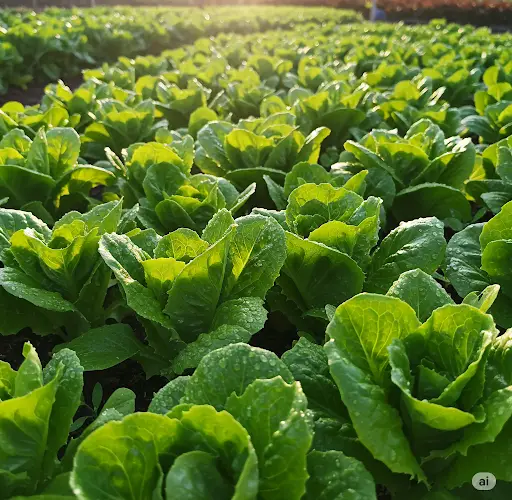If you’ve ever tried to grow lettuce, dill, or parsley from seed and ended up waiting weeks for signs of life — or got patchy germination — you’re not alone. These leafy greens are delicious and rewarding to grow, but germination can sometimes be slow and uneven. Fortunately, there’s a simple sowing technique that speeds up the process and results in faster, more uniform sprouts.
Whether you’re growing in open beds, containers, or a small kitchen garden, this method works wonders for all three crops. It improves moisture retention, reduces seed loss, and gives you a lush green harvest much sooner than traditional sowing techniques.
The Problem with Standard Sowing
Lettuce, dill, and parsley seeds are small and can be delicate to handle. When sown directly into dry or compacted soil, they may:
-
Take too long to germinate
-
Get buried too deep
-
Dry out before sprouting
-
Wash away during watering or rain
Additionally, parsley in particular is notorious for slow germination — often taking two to three weeks. But with a little prep and a smarter sowing strategy, you can get those seeds up and thriving in half the time.
The Secret: Pre-Moistening and Surface Sowing with Cover
This sowing method mimics the conditions seeds experience in nature — moist soil, shallow planting, and consistent warmth. Here’s how to do it step-by-step.
Step 1: Prepare the Soil
Choose a well-draining, loose soil that has been enriched with compost or humus. Leafy greens grow best in fertile soil that retains moisture but doesn’t become waterlogged.
-
Loosen the soil to a depth of 10–15 cm (4–6 inches).
-
Remove any debris, clumps, or stones.
-
Rake the surface smooth.
If sowing in containers, use a high-quality seed-starting mix or a blend of compost, peat, and sand.
Step 2: Pre-Moisten the Soil
Before sowing, lightly water the soil so it’s evenly moist but not soaking wet. Seeds germinate faster in moist soil because they absorb water right away and begin the germination process immediately.
Avoid sowing into dry soil, then watering afterward — this often washes the seeds too deep or unevenly.
Step 3: Sow the Seeds Shallowly
Sprinkle the seeds across the surface of the moist soil. Because lettuce, dill, and parsley have small seeds, they don’t need to be deeply buried — in fact, burying them too deep delays germination or prevents it entirely.
For best results:
-
Lettuce: Sprinkle seeds thinly and lightly press into the soil surface with your hand or a flat board.
-
Dill: Sow evenly and press lightly.
-
Parsley: Since it’s slower to germinate, consider soaking parsley seeds in warm water for 12 hours before sowing to speed things up.
Step 4: Cover with a Thin Layer of Humid Material
This is the key step that accelerates germination:
-
Cover the sown seeds with a very thin layer of fine compost, coconut coir, or loose humus — just enough to protect them from drying out.
-
Gently mist the surface with water to keep it moist.
This top layer acts like a natural blanket — it traps warmth and humidity while allowing light and air to reach the seeds.
You can also cover the area with a sheet of non-woven garden fabric, a clear lid, or a piece of plastic film to maintain moisture until germination begins. Be sure to remove any plastic once you see green sprouts.
Step 5: Keep Moist Until Sprouting
Moisture is essential during germination. Mist the area daily with a spray bottle or use a watering can with a fine rose to avoid disturbing the seeds.
Germination times under ideal conditions:
-
Lettuce: 3–7 days
-
Dill: 7–10 days
-
Parsley: 10–14 days (can be faster if seeds are pre-soaked)
Once the seedlings emerge, remove any cover and ensure they get plenty of light.
Bonus Tips for Success
-
Thin seedlings: Once sprouts have a few leaves, thin them out to avoid overcrowding.
-
Water regularly: Shallow-rooted greens need consistent moisture to grow well.
-
Harvest young: For the best flavor and tenderness, harvest lettuce, dill, and parsley while still young and vibrant.
-
Succession sow: Plant a new batch every 2–3 weeks for a steady supply throughout the season.
Final Thoughts
With just a few simple adjustments to your sowing technique, you can enjoy faster, fuller germination and a more productive garden. By pre-moistening the soil, sowing on the surface, and covering seeds lightly with compost or natural material, you’re recreating ideal conditions for seeds to thrive.
Whether you’re a beginner or an experienced gardener, this method is a game-changer for growing lush, leafy greens like lettuce, dill, and parsley. Try it once — and you may never go back to traditional sowing methods again.



